Introduction
Shipping can be a complex and challenging process, especially for those new to the world of logistics. Whether you’re shipping goods domestically or internationally, there are numerous factors to consider to ensure your cargo arrives safely, on time, and without unexpected costs. Unfortunately, many new shippers make common mistakes that can lead to delays, damaged goods, and financial losses. In this blog, we’ll explore the top 10 shipping mistakes that newbies often make and provide practical tips on how to avoid them.
Mistake #1: Lack of Advance Planning
One of the most common mistakes new shippers make is failing to plan. Shipping isn’t just about getting goods from point A to point B; it’s about ensuring that the entire process runs smoothly. This requires advance planning, including understanding the shipping timeline, choosing the right carrier, and preparing all necessary documents.
How to Avoid:
- Start by creating a detailed shipping plan that outlines every step of the process.
- Consider the time it will take to package, ship, and deliver your goods.
- Make sure to account for potential delays, such as customs clearance or weather-related disruptions.
Mistake #2: Inaccurately Declaring Shipment Value
When shipping internationally, accurately declaring the value of your goods is crucial. Under-declaring or over-declaring the value can lead to serious consequences, including fines, shipment delays, or even confiscation of goods.
How to Avoid:
- Always declare the exact value of your goods on all shipping documents.
- Research the customs regulations of the destination country to understand their requirements.
- If you’re unsure, consult with a customs broker or freight forwarder to ensure accuracy.
Mistake #3: Insufficient Packaging
Proper packaging is essential to protect your goods during transit. Insufficient packaging can lead to damaged goods, customer dissatisfaction, and additional costs.
How to Avoid:
- Use sturdy boxes and appropriate cushioning materials to protect your items.
- Consider the specific needs of your goods—fragile items may require extra protection.
- Label packages with clear handling instructions, such as “Fragile” or “This Side Up.”
Mistake #4: Errors in Shipping Paperwork
Shipping documents are critical for the smooth movement of goods, especially when dealing with international shipments. Errors in paperwork can result in delays, fines, and even the return of goods to the sender.
How to Avoid:
- Double-check all shipping documents for accuracy before submitting them.
- Ensure that all necessary documentation, such as invoices, packing lists, and certificates of origin, are complete and accurate.
- Keep a checklist of required documents to ensure nothing is overlooked.
Mistake #5: Selecting the Wrong Mode of Transport
Choosing the wrong mode of transport can lead to higher costs, longer transit times, and increased risk of damage to your goods. It’s important to consider factors such as the type of goods, destination, and delivery timeline when selecting a transport mode.
How to Avoid:
- Understand the different modes of transport available, such as air, sea, rail, and road.
- Evaluate the pros and cons of each mode based on your specific needs.
- Consider working with a logistics expert to choose the most cost-effective and efficient option.
Mistake #6: Forgoing Cargo Insurance
Shipping goods without insurance is a risky move, especially when dealing with high-value or fragile items. Without insurance, you could be left covering the full cost of damaged or lost goods.
How to Avoid:
- Always purchase cargo insurance, even for small or low-value shipments.
- Understand the different types of cargo insurance available and choose the one that best suits your needs.
- Review the terms and conditions of your insurance policy to ensure you have adequate coverage.
Mistake #7: Not Tracking Shipments
Shipment tracking is essential for maintaining visibility and control over your goods during transit. Without tracking, you may be left in the dark about the status of your shipment, leading to uncertainty and potential delays.
How to Avoid:
- Choose a carrier that offers reliable tracking services.
- Use tracking tools and software to monitor your shipment in real-time.
- Set up notifications and alerts to stay informed about your shipment’s progress.
Mistake #8: Communication Breakdowns
Effective communication is key to successful shipping. Miscommunication or lack of communication between you, your carrier, and your customers can lead to misunderstandings, delays, and mistakes.
How to Avoid:
- Establish clear lines of communication with all parties involved in the shipping process.
- Provide detailed instructions and expectations to your carrier.
- Keep your customers informed about the status of their shipment, especially if there are delays or issues.
Mistake #9: Overlooking Additional Costs
Shipping costs go beyond just the carrier’s fees. There are often additional costs, such as customs duties, taxes, and surcharges, that can add up quickly. Failing to account for these costs can result in unexpected expenses.
How to Avoid:
- Research and understand all potential costs associated with your shipment.
- Get a detailed quote from your carrier that includes all fees and surcharges.
- Budget for unexpected expenses and factor them into your overall shipping cost.
Mistake #10: The DIY Approach
Handling shipping on your own without professional help can be overwhelming, especially if you’re new to the process. The DIY approach can lead to mistakes, delays, and increased costs.
How to Avoid:
- Consider working with a freight forwarder or logistics expert who can guide you through the shipping process.
- Partner with a reputable carrier that offers support and resources for new shippers.
- Take advantage of online tools and resources to educate yourself about the shipping process.
Conclusion
Shipping is a complex process with many potential pitfalls, especially for those new to the industry. By understanding and avoiding these common mistakes, you can ensure that your shipments arrive on time, intact, and within budget. Remember, planning, communication, and professional support are key to successful shipping.
FAQs Top 10 Common Shipping Mistakes Newbies Make and How to Avoid Them
- What is the most common shipping mistake?
- The most common shipping mistake is a lack of advance planning. Proper planning helps avoid delays, additional costs, and other issues that can arise during the shipping process.
- How can I ensure my shipment arrives on time?
- To ensure timely delivery, choose the right carrier, select the appropriate mode of transport, and plan for potential delays by building in extra time for unexpected events.
- What are the best practices for international shipping?
- Best practices include understanding customs regulations, accurately declaring shipment values, choosing the right packaging, and working with a reliable freight forwarder.
- How do I choose the right packaging for my goods?
- The right packaging depends on the nature of your goods. Use sturdy boxes, appropriate cushioning, and clear handling instructions to protect your items during transit.
- Is cargo insurance necessary for all shipments?
- While not mandatory, cargo insurance is highly recommended for all shipments, especially for high-value or fragile items. Insurance provides financial protection in case of loss or damage.
How can I avoid errors in shipping paperwork?
- Double-checking your shipping documents before submission is crucial. Create a checklist of all necessary documents, such as invoices, packing lists, and certificates of origin. It’s also helpful to work with a customs broker or freight forwarder who can assist in ensuring that all paperwork is accurate and complete.
- What should I consider when choosing a freight forwarder?
- When selecting a freight forwarder, consider their experience, reputation, range of services, and familiarity with the regions you’re shipping to. It’s also important to evaluate their communication practices and customer support. A reliable forwarder can help you navigate complex logistics and ensure your shipment arrives safely and on time.
- How can I minimize the risk of damaged goods during shipping?
- To minimize the risk of damage, invest in high-quality packaging materials and follow best practices for packing. Use appropriate cushioning, secure items tightly within the package, and label the box with handling instructions. For fragile or high-value items, consider using specialized packaging and requesting careful handling from the carrier.
- What should I do if my shipment is delayed?
- If your shipment is delayed, the first step is to track the shipment to determine its current status. Contact your carrier to understand the cause of the delay and the expected new delivery time. Keep your customer informed about the situation, and if necessary, adjust your delivery plans or offer compensation for the inconvenience.
- What are the benefits of using shipping management software?
- Shipping management software can streamline the entire shipping process by automating tasks like label printing, tracking, and documentation. It provides real-time updates, helps you manage multiple shipments, and ensures accuracy in paperwork. Using such software can save time, reduce errors, and improve overall efficiency in your shipping operations.




Comments are closed